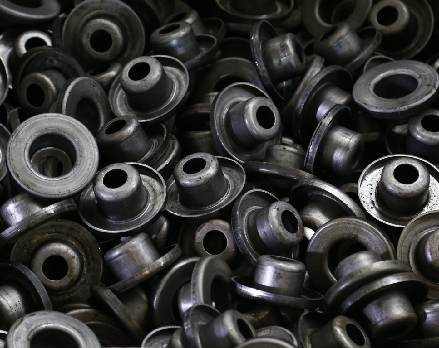 Afrikaans
Afrikaans  Albanian
Albanian  Amharic
Amharic  Arabic
Arabic  Armenian
Armenian  Azerbaijani
Azerbaijani  Basque
Basque  Belarusian
Belarusian  Bengali
Bengali  Bosnian
Bosnian  Bulgarian
Bulgarian  Catalan
Catalan  Cebuano
Cebuano  Corsican
Corsican  Croatian
Croatian  Czech
Czech  Danish
Danish  Dutch
Dutch  English
English  Esperanto
Esperanto  Estonian
Estonian  Finnish
Finnish  French
French  Frisian
Frisian  Galician
Galician  Georgian
Georgian  German
German  Greek
Greek  Gujarati
Gujarati  Haitian Creole
Haitian Creole  hausa
hausa  hawaiian
hawaiian  Hebrew
Hebrew  Hindi
Hindi  Miao
Miao  Hungarian
Hungarian  Icelandic
Icelandic  igbo
igbo  Indonesian
Indonesian  irish
irish  Italian
Italian  Japanese
Japanese  Javanese
Javanese  Kannada
Kannada  kazakh
kazakh  Khmer
Khmer  Rwandese
Rwandese  Korean
Korean  Kurdish
Kurdish  Kyrgyz
Kyrgyz  Lao
Lao  Latin
Latin  Latvian
Latvian  Lithuanian
Lithuanian  Luxembourgish
Luxembourgish  Macedonian
Macedonian  Malgashi
Malgashi  Malay
Malay  Malayalam
Malayalam  Maltese
Maltese  Maori
Maori  Marathi
Marathi  Mongolian
Mongolian  Myanmar
Myanmar  Nepali
Nepali  Norwegian
Norwegian  Norwegian
Norwegian  Occitan
Occitan  Pashto
Pashto  Persian
Persian  Polish
Polish  Portuguese
Portuguese  Punjabi
Punjabi  Romanian
Romanian  Russian
Russian  Samoan
Samoan  Scottish Gaelic
Scottish Gaelic  Serbian
Serbian  Sesotho
Sesotho  Shona
Shona  Sindhi
Sindhi  Sinhala
Sinhala  Slovak
Slovak  Slovenian
Slovenian  Somali
Somali  Spanish
Spanish  Sundanese
Sundanese  Swahili
Swahili  Swedish
Swedish  Tagalog
Tagalog  Tajik
Tajik  Tamil
Tamil  Tatar
Tatar  Telugu
Telugu  Thai
Thai  Turkish
Turkish  Turkmen
Turkmen  Ukrainian
Ukrainian  Urdu
Urdu  Uighur
Uighur  Uzbek
Uzbek  Vietnamese
Vietnamese  Welsh
Welsh  Bantu
Bantu  Yiddish
Yiddish  Yoruba
Yoruba  Zulu
Zulu Snub Pulley - Enhance Your Mechanical Efficiency
Understanding Snub Pulleys A Key Component in Mechanical Systems
In the realm of mechanical engineering, the efficiency of motion transfer and force direction plays a crucial role. Among the various components utilized in systems that require alterations in force direction, the snub pulley stands out as a vital element. Although often overshadowed by larger and more complex machinery, the snub pulley serves distinct purposes in different applications, enhancing both performance and reliability.
A snub pulley, essentially, is a type of pulley that is designed to redirect a belt or cable at an angle, typically used in belt drive systems. Unlike standard pulleys, which primarily change the direction of motion, snub pulleys exert additional tension on the belt. This is particularly useful when the angle of the belt changes significantly or when the configuration of the system demands a tighter connection to ensure that the belt remains in contact with the driving surfaces.
One of the critical functions of the snub pulley is to maintain proper tension in the belt drive systems. A well-tensioned belt not only ensures the smooth transfer of power from the drive motor to the driven equipment but also prolongs the lifespan of the belt and related components. Inadequate tension can lead to slippage, increased wear, and, ultimately, system failure. By using a snub pulley, engineers can better manage tension levels, creating a more effective and resilient drive system.
snub pulley

Furthermore, snub pulleys are integral in reducing belt vibration and noise. Belts can generate significant vibration when operating, especially at high speeds. This vibration not only reduces the efficiency of the system but can also lead to premature fatigue and failure of components. By incorporating a snub pulley, the path of the belt can be adequately guided, minimizing slack and disturbances in the tension, thus ensuring smoother operation and reducing acoustic disturbances.
In terms of design, snub pulleys are often straightforward, featuring a central shaft with a sheave that the belt runs over. They can be utilized in various configurations, including fixed and adjustable types, depending on the specific requirements of the system. Advanced designs may incorporate materials that reduce friction and wear, further improving efficiency.
The application of snub pulleys extends across various industries, from manufacturing and conveyor systems to automotive applications. In an automotive scenario, for example, snub pulleys are commonly found in belt-driven engines where they help direct the motion of serpentine belts that power multiple engine accessories.
In conclusion, the snub pulley, despite its seemingly simple function, plays a significant role in enhancing the performance and efficiency of mechanical systems. By ensuring proper tension, reducing vibration, and optimizing belt pathways, snub pulleys contribute to the reliability and longevity of various applications. As technology continues to advance, the importance of such mechanical components will only become more pronounced, as engineers strive to develop systems that are not only effective but also increasingly efficient and durable.
-
Revolutionizing Conveyor Reliability with Advanced Rubber Lagging PulleysNewsJul.22,2025
-
Powering Precision and Durability with Expert Manufacturers of Conveyor ComponentsNewsJul.22,2025
-
Optimizing Conveyor Systems with Advanced Conveyor AccessoriesNewsJul.22,2025
-
Maximize Conveyor Efficiency with Quality Conveyor Idler PulleysNewsJul.22,2025
-
Future-Proof Your Conveyor System with High-Performance Polyurethane RollerNewsJul.22,2025
-
Driving Efficiency Forward with Quality Idlers and RollersNewsJul.22,2025





























